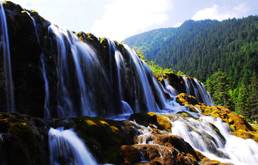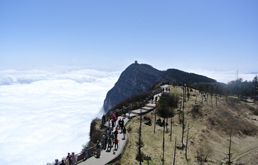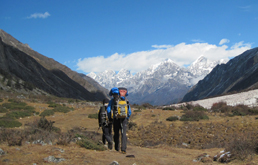Chengdu
Pandas' Hometown
Jiuzhaigou
Famous Fairyland
Emeishan
Sacred Buddhist Site
Leshan
Giant Buddha
Gonggashan
Best for Hiking
Daocheng Yading
Shangri La Views
Dujiangyan
Irrigation System
Siguniangshan
Eastern Alps
Wenshu Monastery is located at Wenshufang, a traditional street block in the city of Chengdu. It is one of the most important Chinese Buddhist Monasteries in China. Wenshu Monastery is also the head of the four great monasteries at upper/middle Yangtze Range. It is a monastery, a Zen shrine, a traditional garden and a pilgrimage destination. It was first built in Sui Dynasty in the beginning of the 7th Century and rebuilt during Kangxi Area in the 17th Century. This monastery has a size of 200,000 sqm and all built in wood. It has in total 300 statues in the monastery. It was called Xinxiang Temple at the beginning and later changed into Miaoyuan Buddha Stupa. Today it is called Wenshu Monastery..

It is very close to the city center. You can get there by subway using line one and two stops from Tianfu Square. By bus you can use 16, 55, and 64.
There are many Buddha statues you can find in this monastery. Statues made of metal, wood, stone, dirt and copper are place in different temples and halls of the monastery. And calculated by time, there are pottery statues from Liang Dynasty, metal statues from Tang and Song Dynasty and bronze statues from Qing Dynasty. Many of the statues are very valuable items in studying Chinese Buddhism. There are also precious traditional paintings and calligraphies from since Ming and Qing Dynasty. The words Konglin was written by the Manchurian Emperor Qianlong. Haiyue scrolls were the original work of Mifu, the famous calligrapher in Song Dynasty. The other significant items include Beiye Buddhist Book from India, the actual skull of Xuanzang, a Japanese Prayer Wheel, a presious Buddhist cape and many other original Buddhist books.
At Zangjing Hall, the Buddhist Library, there are collections of calligraphies and paintings of Molong from Song Dynasty, Poshan, Zhangxue, Biyan, Zhuchan, Heshaoji, Zhengbanqiao, Zhangdaqian and Fengzikai from Ming and Qing Dynasty.
Wenshu Monastery was built facing south and back to north with five levels from the entrance. Tianwang Temple is the first one and after this it is temple of three masters before the main temple Daxiong Temple, behind Daxiong Tempel is the Lecture Hall and Library.
Red Wall and Three Doors
The red wall is part of a traditional Chinese construction. It is believed to block the ghosts. The words Wenshu Monastery was written by Cidu the former Buddhist Master and one of the founders of Wenshu Monastery. The Three Doors are usually the first temple in a monastery. It is the hall for Metreiya Buddha, the future Buddha and the four famous Protectors.
Three Masters Hall and Daxiong Temple
Three Masters hall is after the Three Door Temple. The three masters are the Bodhisattva from Buddhism system: Avalokitevara, Manjusri and Samantabhadra. Daxiong Temple is the main temple that was build by Cidu Master. It is about 11 meters’ tall and has a statue of Sakyamuni in the hall. By the side of Sakyamuni, there are copper-made Jiaye and Anan standing statues.
Lecture Hall and Library
In the Lecture Hall was the former monastery Xinxiang when it was still a small monastery. The Konglin written By Kangxi the emperor was placed here. It has a statue of the medicine Buddha and by the side there are 12 Yaocha Protectors statues. The Library is also called Zangjing Hall where the precious items and Buddhist books are stored. It was rebuilt in Qing Dynasty and it is about 16 meters’ tall.
Wenshu Monastery is a human monastery. It has activities for Buddhists and non-Buddhists throughout the year to spread the wisdom of Buddhism. The major activities include:
9th March, Xuanzhuang Sheli Shrine Worshiping Event
23rd March, Guanyin’s Birth Lantern Praying Event
5th April, Qingming Memorial Day
1st May, Monastery Life Experience Day
10th May, Buddha Birthday Baptizing Day
Middle July, Zen Course
19th July, Guanyin’s Birth Praying Event
7th to 14th of August, Menglan Gratitude Day
12th September, Middle Autumn Day
1st October, Monastery Life Experience
The last month of Chinese Lunar Calendar, Zen Course
Entrance Charge: Free
Opening hours: everyday from 09:00 to 17:00
ecommended length of visiting: 1 - 2 hours
Other interests nearby: Chunxi Street, Wenshufang

Route: Chengdu - Jiuzhaigou

Route: Chengdu - Leshan - Emeishan - Chengdu

Route: Chengdu - Kangding - Gongga - Chengdu